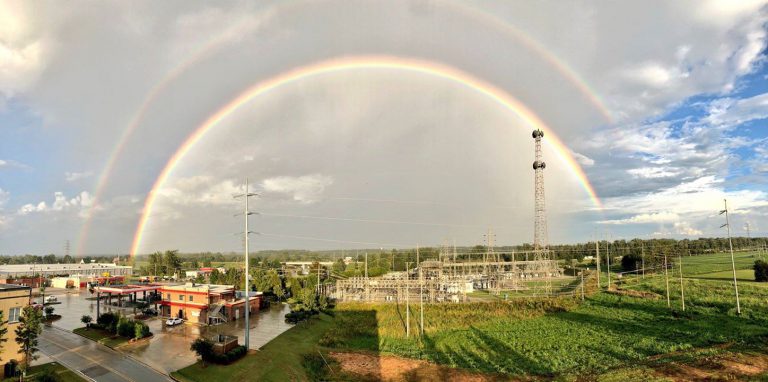
Saw this “double rainbow” featured on Our Tupelo recently :

Ever wonder what it takes to make a rainbow? You need rain, you need sun and you need someone to observe it – and they all need to be in the right orientation. You are more likely to see a rainbow when the sun is low in the sky (sunrise or sunset) with the sun at your back and rain out in front of you. Because the different colors (Red, Orange, Yellow, Green, Blue, Violet) that make up sunlight travel at different speeds when moving through water, raindrops act like little prisms and cause the incoming sunlight to bend and break into its component colors. In fact, the sunlight undergoes two refractions – entering and leaving the raindrop – and one reflection before heading in the direction of the observer.
(check out this link for a more in depth explainer https://www.atoptics.co.uk/rainbows/primrays.htm)
Because red bends less than the blue end of the spectrum, you need to look at a droplet higher in the sky for the red light to hit your eye. Blue light, which bends more when moving from air to water and vice-versa, can be seen from drops lower in the sky – hence, the ROYGBV ordering of the colors (outside to inside) of a primary rainbow. (Here is a second link with even more science about how your position effects what you see when you see the secondary bow)
A double rainbow (often called a secondary bow) is a result of two reflections that occur within the raindrop. The second reflection results in a reversal in the order of the colors when compared to the primary bow.

Latest posts by bob.swanson (see all)
- My Brush With Natural History - November 19, 2018
- Spring Tides For a Fall Hurricane - October 11, 2018
- She Comes In Colors - September 25, 2018